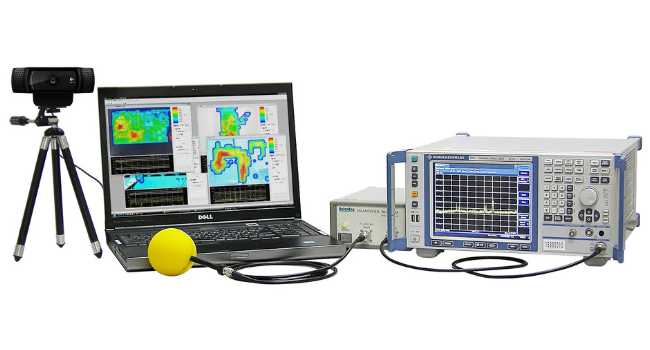A cost-beating means of simulating heart beats has emerged as another new application for RIGOL-uk.co.uk, this time using a RIGOL waveform generator as an important part of the systems for verifying life-saving hospital equipment.
Patients with Cardiac dysrhythmia (also known as arrhythmia or irregular heartbeat) can have any of a group of conditions in which the electrical activity of the heart is irregular. Such patients receive treatment including bedside cardiac pacemakers which try to sync with the patient’s heartbeat. Sensitive electronics is present in this hospital equipment to sense this beat and must continue to make accurate readings, without drift or changes in amplitude, throughout its life. It is important that this is verified from time to time. Without this test, critical life support equipment could potentially misread a patient’s natural heart response. In such a fault condition it might wrongly determine the stimulus to give to a sick patient’s heart.
Supporting our local hospital teams using the RIGOL DG4062, the RIGOL-uk team were able to lab-test the features of RIGOL wave generators. The pre-sales tests conducted at Telonic Instruments Ltd’s RIGOL test lab in Berkshire gave the medical research team the assurance the correct wave shapes are possible to simulate this particular hospital’s test (tests can differ* so take care to apply the test specified by your particular medical equipment).
With the aid of a rich menu of RIGOL built-in waveforms and additional custom arbitrary waveform capabilities, a wide range of wave forms can be generated, with model options to extend beyond 16,000 wave points. The DG5072 goes much further and can open up a massive range of simulation scenarios, storing a set of waveforms with 128 million points in total.
The research team in the south east used the flexible features of DG4062 to behave like an irregular heart beat sensor output. It has also been used in the required final test of the Model 4170 Bedside. Different medical equipment technology can demand different tests*, so it is important to select versatile test and measurement instruments from a supplier who can tell you clearly about the capabilities of the functions of the instrument. This typical example requires: a function generator capable of 1 Hz to 1 MHz range, 5% accuracy; amplitude: 100mV to 10 V (peak-to-peak), 5% accuracy, with waveform shape of a Haversine (one full sine wave cycle starting and ending at 270°. DG4062 generator helps to verify the integrity of the electronic circuitry in the unit, ensuring that it correctly identifies waves of a specified shape.
FIG. 1. Illustrating a 600mV Haversine output from the DG4062 (before attenuation to 3mV in an e.g. 200:1 attenuator ).
This is captured on a RIGOL DS2072A series oscilloscope providing a detailed view of the DG burst function – the bottom ‘Zoom’ trace is an expanded view of the central pulse.
The DG4062 is a 2-channel unit, with each independent channel being capable of setting with Burst Mode (in use above), plus a range of other simultaneous operations, making a very flexible source of test signals for biomedical applications. As illustrated it is possible to independently set the period between each burst – 500ms required in this examples test – and also set the width of each Haversine – in this case 20ms.
All innovative RIGOL DG-models offer a good range of computer controlled features, lending themselves to applications needing sequencing and repetitive testing by medical researchers and to help provide advanced technical backing for today’s medical practitioners.
To find out more about built-in functions in RIGOL DG-series instruments, and the advanced logging functions of many more in Telonic’s UK stock, call the RIGOL-UK Team on 0118 978 6911.
*Important note: This is an application note for general information about possible uses of RIGOL equipment features with a wide range of biomedical applications. It gives example-only tests of DG4062’s function in principle and are not to be used in real installations or as operational guidance. Operational tests for verification of any patient equipment would need to be customised to each application and each patient equipment validation could vary greatly from the specification example in this general application note. Operational use would also normally require, as a minimum, that the RIGOL DG equipment is calibrated to a traceable standard both as an option on-supply (Telonic can arrange National Standards calibration on supply of typical waveform generator capabilities) and then suitably frequently, in a manner determined by the quality systems applicable to your operational setting.

































































































 FREE SHIPPING £75+
FREE SHIPPING £75+
 CELEBRATING 50+ YEARS
CELEBRATING 50+ YEARS
 PRICE MATCH GUARANTEE
PRICE MATCH GUARANTEE




